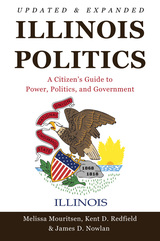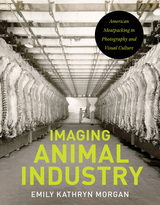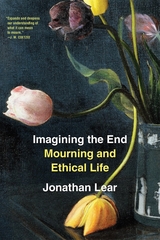113 books about Demography and 3
start with H
113 books about Demography and 3
113 books about Demography
3 start with H start with H
3 start with H start with H
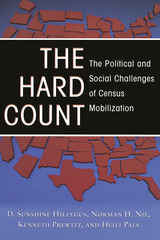
The Hard Count
The Political and Social Challenges of Census Mobilization
D. Sunshine Hillygus
Russell Sage Foundation, 2006
American democracy relies on an accurate census to fairly allocate political representation and billions of dollars in federal funds. Declining participation in previous censuses and a general waning of civic engagement in society raised the possibility that the 2000 count would miss many Americans—disproportionately ethnic and racial minorities—depriving them of their share of influence in American society and yielding an unfair distribution of federal resources. Faced with this possibility, the Census Bureau launched a massive mobilization campaign to encourage Americans to complete and return their census forms. In The Hard Count, former Census Bureau director Kenneth Prewitt, D. Sunshine Hillygus, Norman H. Nie, and Heili Pals present a rigorous evaluation of this campaign. Can a busy, mobile, disengaged public be motivatived to participate in this civic activity? Using a rich set of data and drawing on theories of civic mobilization, political persuasion, and media effects, the authors assess the factors that influenced participation in the 2000 census.. The Hard Count profiles a watershed moment in the history of the American census. As the mobilization campaign was underway, political opposition to the census sprang up, citing privacy issues and seeking to limit the kind of data the census could collect. Hillygus, Nie, Prewitt, and Pals analyze the competing effects of the mobilization campaign and the privacy controversy on public attitudes and cooperation with the census. Using an internet based survey, the authors tracked a representative sample of Americans over time to gauge changes in census attitudes, privacy concerns, and their eventual decision whether or not to return their census form. The study uniquely captures the public's exposure to census advertising, community mobilization, and news stories, and was designed so people could view video clips and photos of actual campaign advertisements on their sets in their homes. The authors find that the Census Bureau campaign did in fact raise awareness of the census and census participation. The mobilization campaign was especially effective at increasing participation among groups historically undercounted by the census. They also find that census participation would have been higher if not for the privacy controversy, which discouraged many people from cooperating with the census and led others to omit information from their census form. The findings of The Hard Count have important policy implications for future census counts and offer theoretical insights regarding the influence of mobilization campaigns on civic participation. The goal of full and equal cooperation with the decennial census and other government surveys is an important national priority. The Hard Count shows that a mobilization campaign can dramatically increase voluntary participation in the decennial headcount and identifies emerging social and political challenges that may threaten future census counts and contribute to the growing fragility of our national statistical system.. A Volume in the Russell Sage Foundation Census Series
[more]
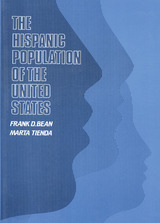
Hispanic Population of the United States
Frank D. Bean
Russell Sage Foundation, 1987
The Hispanic population in the United States is a richly diverse and changing segment of our national community. Frank Bean and Marta Tienda emphasize a shifting cluster of populations—Mexican, Puerto Rican, Cuban, Central and South American, Spanish, and Caribbean—as they examine fertility and immigration, family and marriage patterns, education, earnings, and employment. They discuss, for instance, the effectiveness of bilingual education, recommending instead culturally supportive programs that will benefit both Hispanic and non-Hispanic students. A study of the geographic distribution of Hispanics shows that their tendency to live in metropolitan areas may, in fact, result in an isolation which denies them equal access to schooling, jobs, and health care. Bean and Tienda offer a critical, much-needed assessment of how Hispanics are faring and what the issues for the future will be. Their findings reveal and reflect differences in the Hispanic population that will influence policy decisions and affect the Hispanic community on regional and national levels. "...represents the state of the art for quantitative analysis of ethnic groups in the United States." —American Journal of Sociology A Volume in the Russell Sage Foundation Census Series
[more]
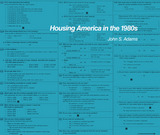
Housing America in the 1980s
John S. Adams
Russell Sage Foundation, 1987
Housing provides shelter, in a variety of forms, but it is also resonant with meaning on many other levels--as a financial asset, a status symbol, an expression of private aspirations and identities, a means of inclusion or exclusion, and finally as a battleground for social change. John Adams' impressive new study explores this complex topic in all its dimensions. Using census data and other housing surveys, Adams describes the recent history of housing in America; the nature of housing supply and demand; patterns of housing use; and selected housing policy questions. Adams supplements this national and regional analysis with a remarkable set of small-area analyses, revealing how neighborhood settings affect housing use and how market forces and other trends interact to shape a neighborhood. These analyses focus on a sample of over fifty urbanized areas, including the nation's three largest cities (New York, Los Angeles, and Chicago). Special two-color maps illustrate the dynamics of housing use in each of these communities. Clearly and insightfully, this volume paints a unique picture of the American "housing landscape," a landscape that reflects and regulates significant aspects of our national life. A Volume in the Russell Sage Foundation Census Series
[more]
READERS
Browse our collection.
PUBLISHERS
See BiblioVault's publisher services.
STUDENT SERVICES
Files for college accessibility offices.
UChicago Accessibility Resources
home | accessibility | search | about | contact us
BiblioVault ® 2001 - 2024
The University of Chicago Press



